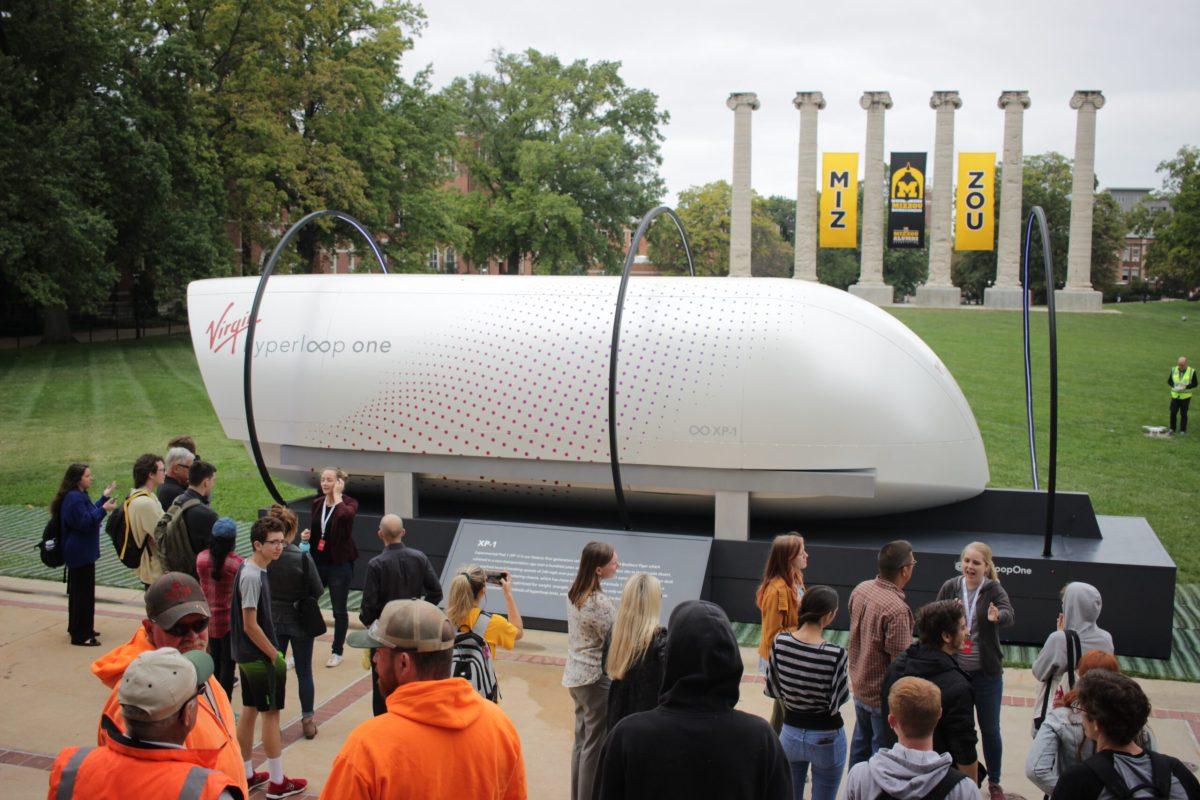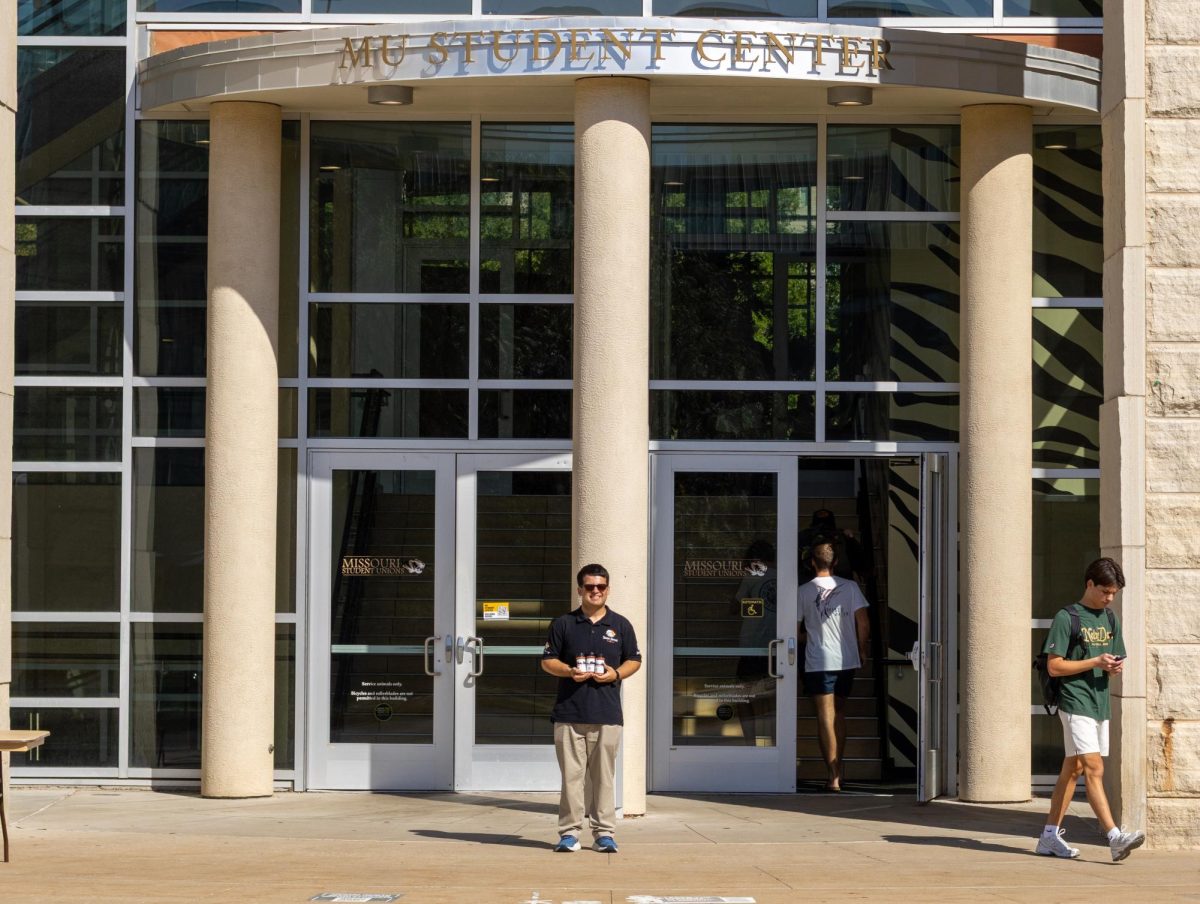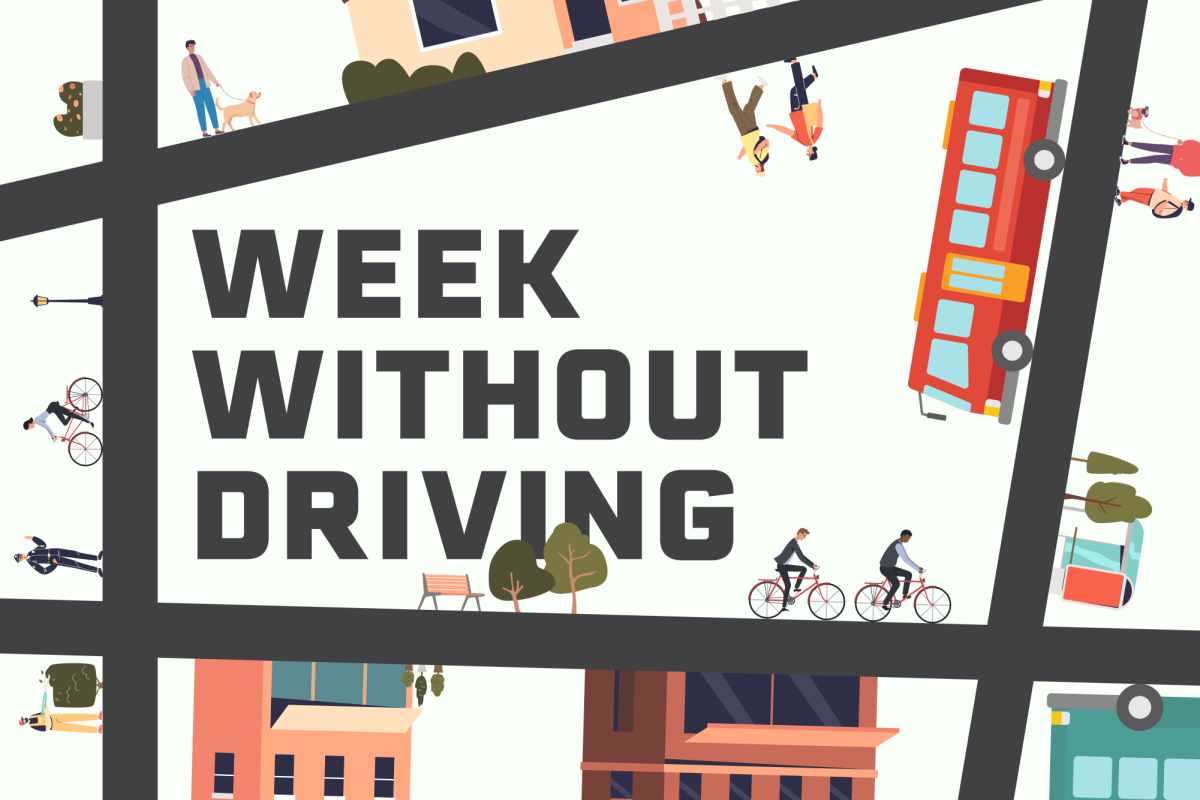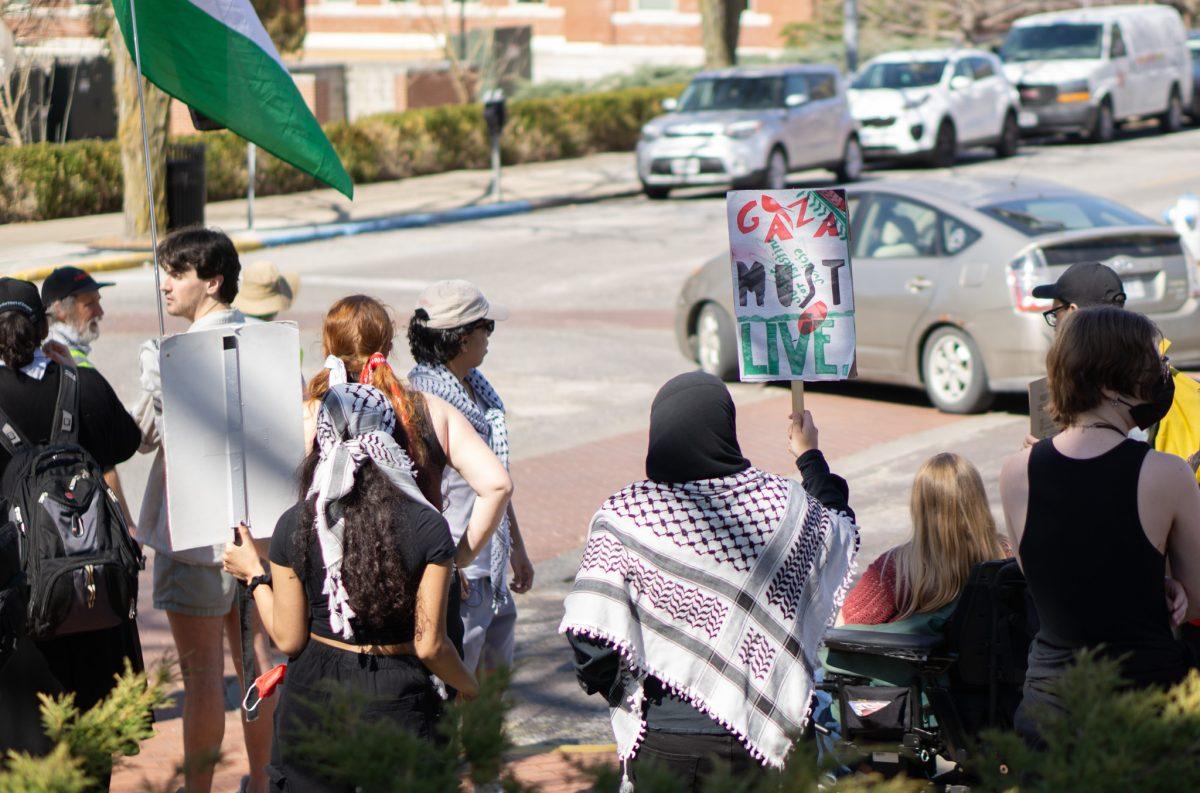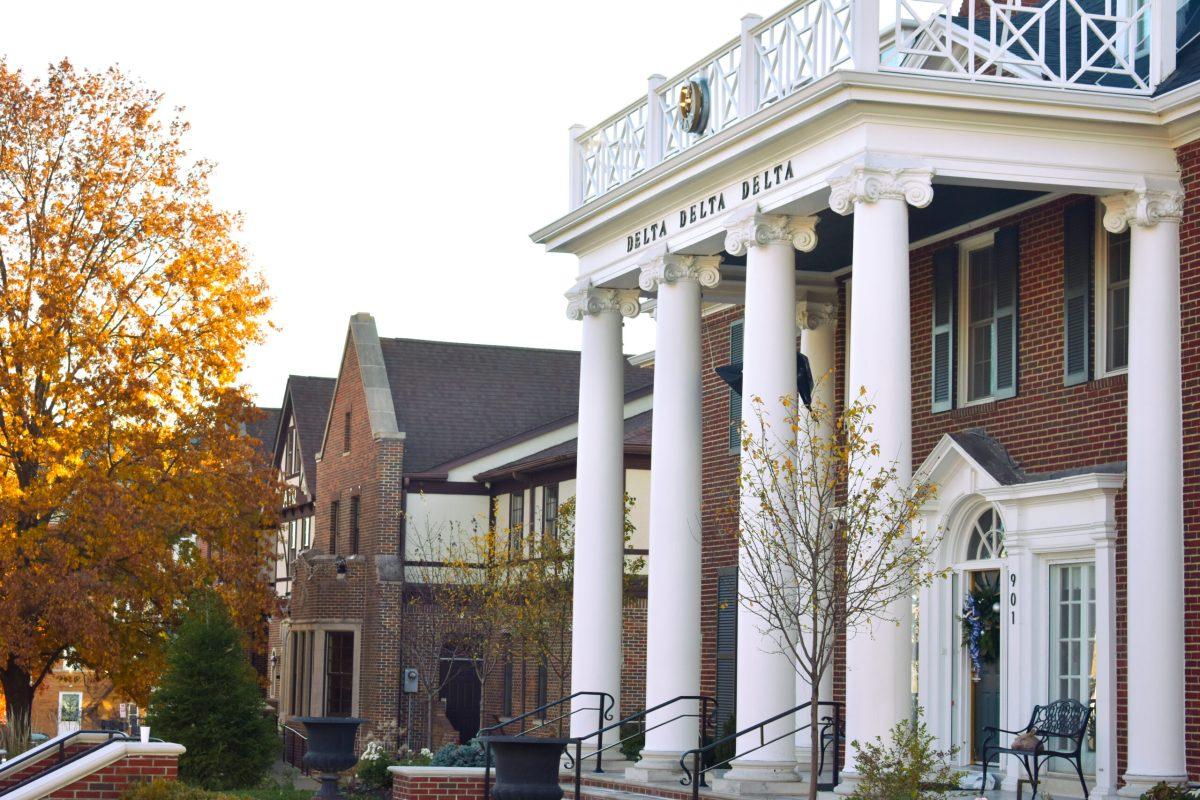Today, residents who have jobs in either St. Louis or Kansas City know what a hassle it is to drive to work everyday. Driving is the current option, which takes about two hours, but what if there were a quicker fast transit-system that would only take 15 minutes?
Enter the Hyperloop. On Oct. 3 and 4, MU students were given the opportunity to attend a master class. They were able to witness the newest form of transportation in front of Jesse Hall on Francis Quadrangle with the help of the MU College of Engineering and the Virgin Hyperloop One team.
The master class held in Ketcham Auditorium of Lafferre Hall was led by Kristen Hammer of the VHO team and lasted from 2 to 3 p.m. Hammer covered general points of what a hyperloop system is and how it can impact the Missouri transportation system. Below is a compressed view of the system.
The Virgin Hyperloop One is a revolutionary new way to get from one location to the next. The system is comprised of three main parts. The first is a transport pod in the shape of a silver bullet which can carry 28 passengers. The second part is comprised of a system of pneumatic tunnels. These tunnels are filled with nothing but a single lane of the track. This leads to the third part. The track itself is a magnet. When sealing the tube with the pod inside, the environment around the transport pod is surrounded by what is described as an almost vacuumed area. When the magnets of the track are turned on, the pod levitates and the power of electromagnetic propulsion pushes it forward up to speeds of approximately 600 mph.
“In terms of acceleration, each pod has a gradual start and moves faster down the pipeline,” Hammer said. “Given that the system is controlled by an automated system, it will be one of the safest experiences for passengers.”
This form of vehicle would not exist had it not been for SpaceX’s Chairman, Elon Musk. Creating innovative companies in Silicon Valley such as Tesla and PayPal, Musk’s idea of a Hyperloop System was introduced in 2013 as a 57-page Hyperloop Alpha paper proposal. It was only a year later that Hyperloop One became a company to make that dream a reality.
Dean Elizabeth Loboa of the MU School of Engineering has expressed her encouragement and excitement for her students in the development of a Missouri hyperloop system.
“The University of Missouri has been involved in the research and development stages of the Hyperloop project via its participation in the Missouri feasibility study with Black & Veatch and Virgin Hyperloop One,” Loboa said. “Additionally, the university has begun reaching out to prospective university partners to form an International Tube Transport Center of Excellence, which ideally would be housed on the MU campus.”
If a Hyperloop system was accepted by the Missouri state government, MU would become a flagship school for the development and production of one of the most ambitious civil engineering projects in the state of Missouri. This step toward a new transportation system would continue the innovation the state has made in the past. Missouri was the first state to adopt the interstate highway system. It is another thing to say the state of Missouri has played a critical key role in the development of the Mercury space capsules for NASA in the early days of space exploration.
Currently, Virgin Hyperloop One and MU are lobbying to have this proposed system built. Hammer further explored this problem during the master class.
“We understand that with the development of any infrastructure project, states use taxpayers dollars to build and repair the said project,” Hammer said. “I can say right now in full confidence that the construction of a proposed Kansas City-Saint Louis Hyperloop route will not be paid through your state taxes.”
Hammer then discussed where Hyperloop stations would be placed in cities.
“The main goal is to get the least amount of distance a commuter has to travel to reach a station,” Hammer said. “This is why we would place our stations within the center of cities and other metropolitan areas.”
Ideally, there would be a midway point for this route, and it would be placed in the center of Columbia. Bill Turpin, interim associate vice chancellor for economic development, president of the Missouri Innovation Center and member of the Missouri Blue Ribbon Panel for the Hyperloop has given his thoughts on where the ideal station would be located.
“The hyperloop is this generation’s form of transportation,” Turpin said. “The most ideal place to put a station in my mind would most likely be by Mizzou North on the I-70 business loop.”
The cost of residents using the system would equal the price of a full gas tank, which on average is $20 to $40.
By Virgin Hyperloop One’s current estimates, Missouri residents may see a Hyperloop coming to the state within the next decade.
_Edited by Laura Evans | [email protected]_


